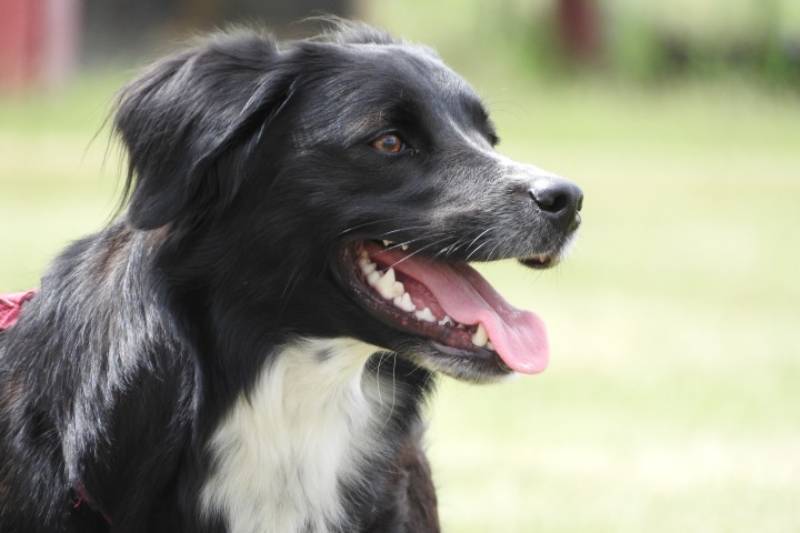Our dogs are part of the family, and with that comes the responsibility of being in charge of their care, from vet visits to teeth brushing. Dental health is vital for a healthy and happy dog, but what do we know about their teeth, except how to keep them clean?
We’ve collected some fascinating facts about your dog’s teeth, from how many there are to how strong they are! They will give you an appreciation for why it’s so important to keep your dog’s pearly whites healthy.
The 5 Most Fascinating Facts About Your Dog’s Teeth
1. Adult Dogs Have More Teeth Than Humans

2. Dog’s Teeth Are Alive
Just like our own teeth, dogs’ teeth are living tissue. There are several parts to the tooth. The actual tooth is the core, called the pulp, which is covered by bone-like material-dentine, and finally, a layer of enamel. The pulp produces dentin inside the tooth, nerves, blood vessels, and other tissues. It has a high concentration of pain receptors and is very sensitive. This is why if your dog has broken a tooth, it should be checked by a veterinarian.
3. Each Tooth Has a Unique Purpose

While the chemical structure and makeup of a dog’s teeth are similar to human teeth, the size and shape are entirely different. Human teeth are used to grind against one another and pulverize food. Dogs can’t do that because of the design of their teeth.
- Incisors: These are small teeth used for scraping flesh from bones (in the wild) and picking up items (like their favorite toy). Your dog has 12 incisors (six on the bottom and six on the top).
- Canines: They are also known as “fangs” and are usually used to grip things your dog is trying to hold rather than eat. If your dog were to bite you, the fangs would be the teeth that penetrate your skin. Your dog has four canines (two on the bottom and two on the top).
- Premolars: These are the teeth that your dog chews heavily with. They run up the sides of your dog’s mouth, and there are 16 teeth in total. Your dog uses these teeth for shearing.
- Molars: These teeth are located behind the premolars, and there are usually ten of them, but this will depend on the breed of dog. The molars are used to grind plant material like grass and break down protein sources.
4. Dog’s Teeth Have Deep Roots
People are generally surprised by how long the roots of a dog’s tooth are. The root structure of a canine’s tooth is similar to a human’s, except the three upper molars have two roots and the two lower molars have three. The visible crown is typically only about one-third of the length of the full tooth; for incisors, the crowns are actually only one-fourth the length of the entire tooth. They are also more firmly attached to the jaw bone than human teeth and therefore harder to remove.
5. Cavities Are Very Rare

The bacteria in a dog’s mouth is very different from a human’s, so cavities don’t occur as often in dogs. Cavities occur because specific bacteria metabolize sugars into acid, but dogs don’t generally consume as much sugar as humans do. Plus, the species of bacteria that cause these cavities are rare in dogs’ mouths.
Other Frequently Asked Questions
How Do I Look After My Dog’s Teeth?
The first and best defense against gum disease is daily cleanings. Couple this with the occasional professional cleanings at your vet’s, and this preventative maintenance will go a long way toward keeping your dog’s gums healthy. 80% of dogs have gum disease by the time they’re 3 years old. Gum disease is more common in small dogs because teeth crowding makes it trickier for owners to remove plaque. So, keeping up with regular brushings is essential!
What Are the Signs of Dental Disease?
While you will try to prevent it, you should be aware of the signs of dental disease just in case. So, watch out for the following:
- Bad breath
- Bleeding gums
- Blood in water or food bowls
- Dropping food while eating
- Facial swelling
- Favoring one side of the mouth
- Plaque
- Red gums
- Rubbing face with paws or on the floor
- Smelly saliva
Final Thoughts
Dental hygiene is a large part of your pet’s overall health, and your dog relies on you to keep their teeth clean and healthy. This means it’s up to you to take them for checkups and regular dental exams to avoid things like gum disease or broken teeth, which can be particularly painful. So, try to maintain a routine dental program at home to keep your dog happy and healthy.










